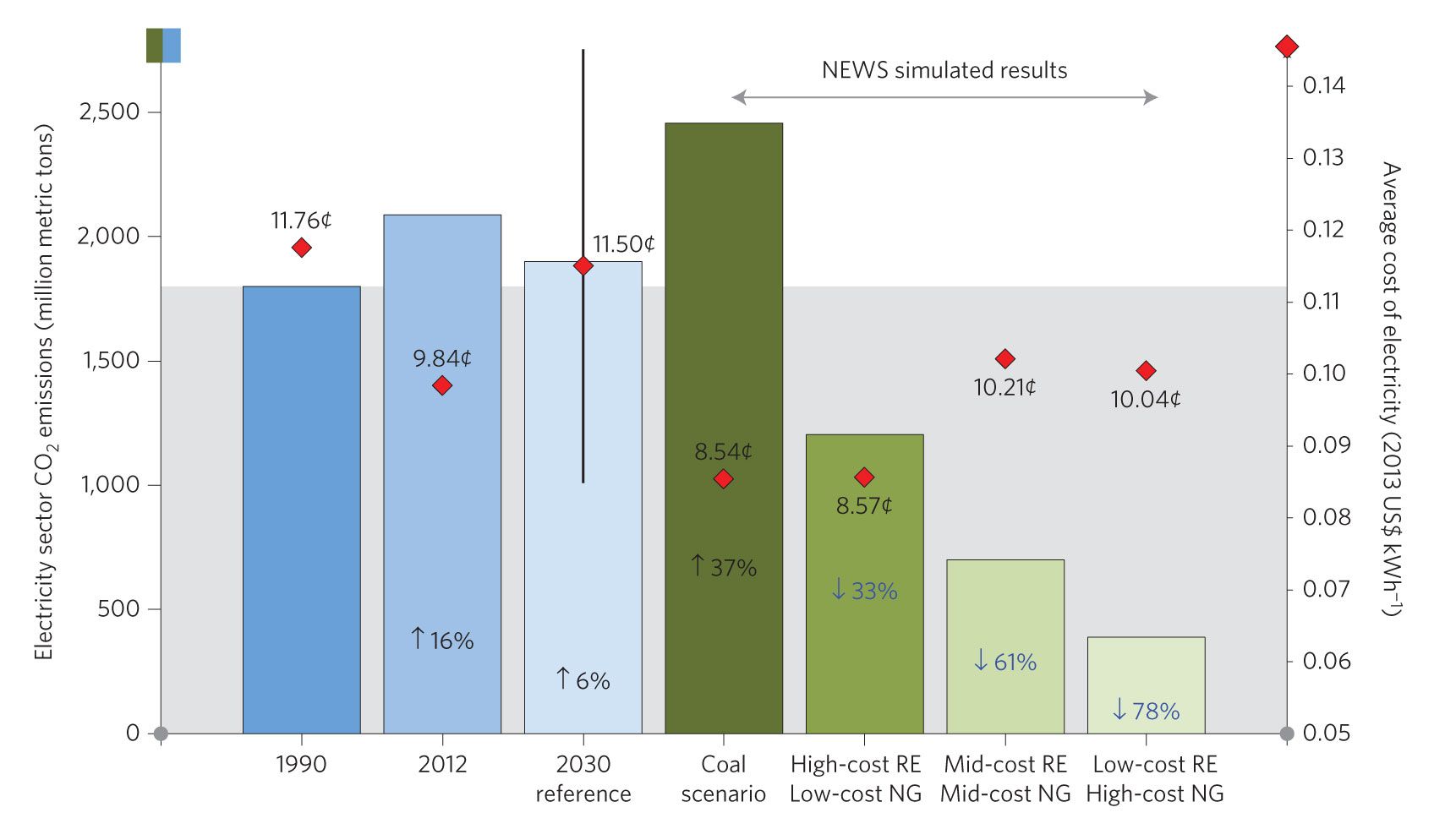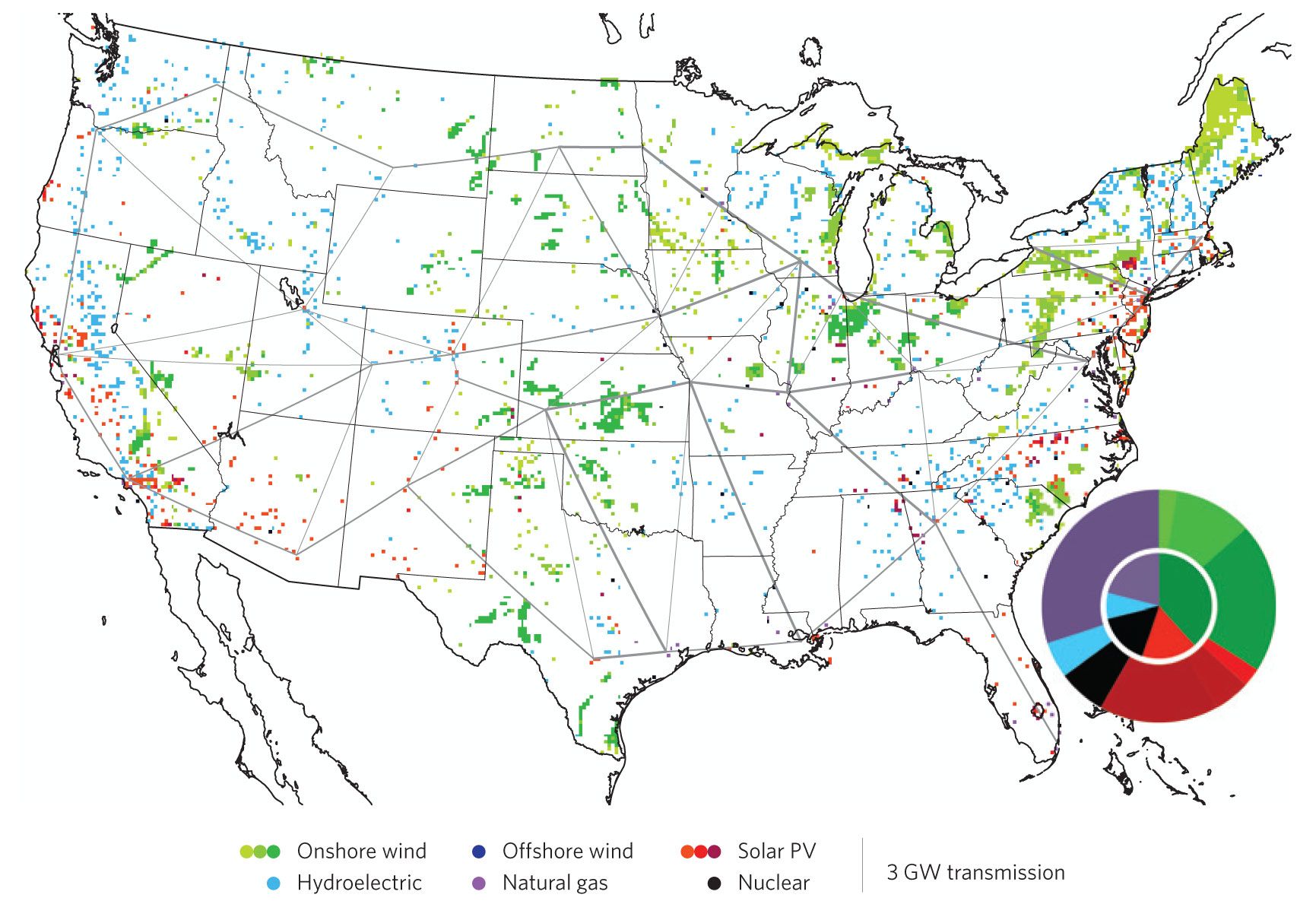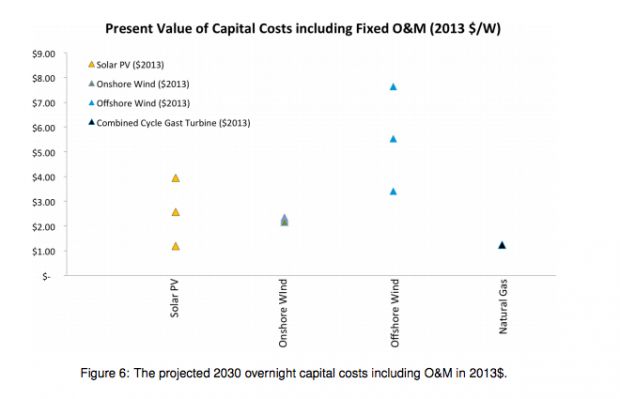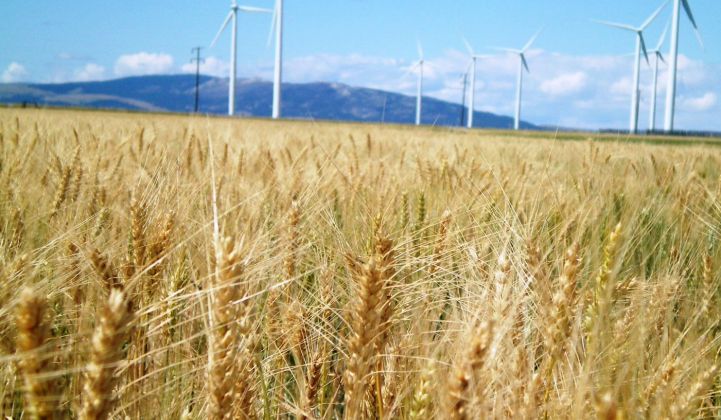Wind and solar power coursing across a national system of high-voltage direct current transmission lines could significantly cut power sector carbon dioxide emissions without increasing the cost of energy in the U.S., according to a new study published in Nature Climate Change.
Researchers at NOAA’s Earth System Research Laboratory and the University of Colorado, Boulder looked at three scenarios in which wind, solar, hydropower and nuclear were paired with natural gas at different cost points. They also included the cost of building a national high-voltage direct current (HVDC) transmission system on top of the existing power system.
“The average variability of weather decreases as size increases; if wind or solar power are not available in a small area, they are more likely to be available somewhere in a larger area,” wrote lead author Alexander MacDonald, director of NOAA’s Earth System Research Laboratory. Although energy storage can also provide stability to the grid, HVDC can do it at a lower cost, the study contends.
The results showed that with mid-cost renewables and mid-cost natural gas, electric power CO2 emissions could be cut by about 60 percent by 2030, a figure that rises to nearly 80 percent if natural gas costs rise while renewables decline by 2030.
In all scenarios, the cost of power in 2030 would be cheaper than the International Energy Agency’s estimate of an average $0.115 per kilowatt-hour for the levelized cost of electricity in the U.S. in 2030.

The model used weather data with high temporal and spatial resolution and assumed co-optimized dispatch of renewables across the modern HVDC grid. “We integrate complex weather data over continental-scale geography while still handling the salient features of an electrical power system,” the authors wrote in the paper.
The authors modeled 3 gigawatts of HVDC transmission to carry 523 gigawatts of wind power, 371 gigawatts of solar PV, 471 gigawatts of natural gas, 100 gigawatts of nuclear and 74 gigawatts of hydroelectricity, an increase of 30 percent over 2012 installed capacity.

The HVDC transmission network assumes a cost of about $700 per megawatt-mile and another $182,000 for each substation. The authors note that economies of scale allow for that price for the HVDC line, which becomes substantially cheaper once the lines are longer than about 300 miles. Costs for renewables were fairly conservative, with medium cost-assumption estimates nearly in line with today’s costs for wind and solar.

A benefit of HVDC, besides connecting generation to load centers more efficiently than high-voltage alternating current, is that it reduces the need for frequency regulation that comes with a high penetration of renewables.
One limitation of the study is that it only used hourly data for wind and solar, although fluctuations within the hour can be highly variable. Hourly data was used because there was not more granular electricity demand data and/or detailed weather data available across the large geographic scales the researchers used.
To realize the scenario laid out in this study, the U.S. power sector would have to embrace HVDC in a way that it has not previously. There is very little HVDC in the U.S., although it is being used more frequently in Europe and China. One of the largest projects in the U.S. is the 1,000-megawatt Clean Power Link in the Northeast that was recently green-lighted.
But large-scale transmission projects are difficult to site and often challenging to get approval for, especially as they move across state lines. Another benefit of HVDC, which PowerLink took advantage of, is that it can often be buried along existing rights of way, eliminating many of the battles that traditional transmission faces.
The authors acknowledged the challenges, and the political will that would have to be mustered for a project of this scope. They concluded that building out a national HVDC power system over the existing one would be similar to the challenge and opportunity of building the transcontinental railroads or the interstate highway system.



